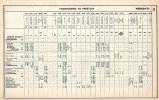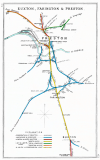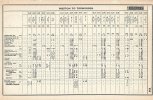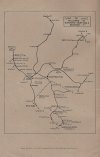Good spot - the same for my 1977 CM WTT.Looking at the South Manchester (Section M) WTT for 1974/75, the page summarising 2-position route indication shows the numbers quoted by @jfollows:-
However in the body of the same WTT, the handful of rush-hour trains from Buxton to Manchester which terminated at Oxford Rd rather than Piccadilly all show "DMU B3" at the head of their columns (not DMU B0 as would be expected).
- Piccadilly - Buxton: 3
- Buxton - Piccadilly: 3
- Oxford Rd - Buxton: 3
- Buxton - Oxford Rd: 0
These trains did, however, have different 4-character headcodes: 2H71 if terminating at Picc, 2H72 if going to Oxford Rd.
The trains involved were:
07:04 SX Buxton - Oxford Rd
07:26 SX Buxton - Oxford Rd
Possibly the driver of the train in the photo had diligently set his B3 route indicator according to the WTT entry for his particular train.
Or maybe, because the huge majority of DMUs up and down the Buxton line always used the B3 code, the winding mechanism for the blinds had rusted up in the damp air at Buxton depot!
I used to use the evening workings (so properly B3!) from Oxford Road which used platform 1; at the time the service frequency from Oxford Road to Piccadilly was ~5/hour so they were a useful addition to the frequency, and they also sat in platform 1 for a while so it was easy to spot them and walk over to them. I changed at Piccadilly for Poynton/Macclesfield.




